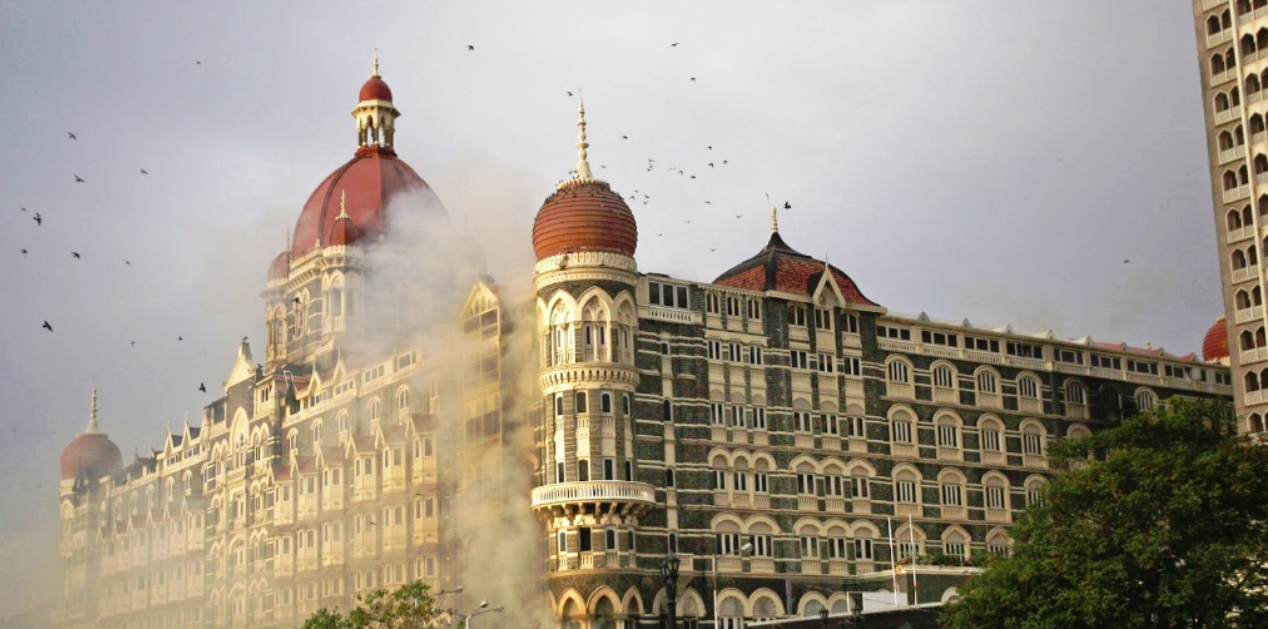After having crushed the concept of the Caliphate little over 90 years ago by Kemal Ataturk, the first president of the modern-day Turkey, a renewed effort was made by a newly-founded Sunni militant group, which, today, is known by the name Islamic State of Iraq and Syria (ISIS). Under the leadership of the new self-proclaimed Caliph, Abu Bakr al-Baghdadi, the ISIS, also known as ‘Daesh’, was able to establish a so-called ‘caliphate’ in Syria and Iraq after capturing vast swathes of land, particularly in Iraq. The speed at which this outfit started to occupy territories since the early 2014 raised its profile as an organisation that remained committed to its ambition of establishing a Islamic State not only in the Levant but wherever possible. This characteristic feature had attracted thousands of foreign fighters, sympathisers, supporters and affluent donors who cherished the dreams of an Islamic state becoming a reality.
Amongst its earliest territorial conquests, the fall of Mosul (after Fallujah and Ramadi in Iraq), in early June 2014, became one of the most astounding victories for ISIS. That approximately 1,500 of its fighters could oust 30,000 United States (US)-trained Iraqi soldiers and police personnel from Mosul became an “extraordinary and symbolic victory” for the outfit. Moreover, thousands of Iraqi civilians fled from this city and this exposed the awful unpreparedness of Iraq’s security forces for such sudden gush of violence from oppositions. This was a prize possession as the city is strategically located, giving easy accesses to Syria and Turkey, where the outfit unleashed some of its most brazen terror onslaughts in the last couple of years. During the early period into its inception, several weapons systems possessed by ISIS were captured from Iraqi soldiers (in Mosul) who were equipped by US hardware. Since then, Mosul has remained a symbol of sectarian divide and hotbed of insurgency and violent extremism in Iraq. But for various reasons, the operation to liberate this city from the clutch of ISIS was delayed.
A little more than a year, after the discussion for an impending operation began in the early hour of 17 October this year, Iraq’s Prime Minister Haider al-Abadi announced the launch of military operation to liberate the city of Mosul. The Iraqi Security Forces (ISF) has the backing of the US-led coalition air strikes, Kurdish Peshmerga fighters, Turks and Shiite militias, which marks a convergence of different players with their vested interests in Iraq. But being hopeful and positive of the campaign, the Iraqi leader even said, “The hour has come and the moment of great victory is near”. The final push for this campaign came after recapturing several other cities in Iraq and Syria since the beginning of last year. Shrinking territories and declining financial wealth have become a major setback for this terror group which used to swear by its capacity to annex territories and recruit fighters of all profiles. These are some of the manifestations of its gradual decay. However, the launching of the current militarily campaign is just the beginning of a battle which is expected to be one of the most difficult, bloody and extended counter-ISIS battles. Keeping these in view, it was decided to launch the war as a carefully calibrated, phased operation for the ultimate takeover.
Given the centrality of Mosul to ISIS’s vision of the Caliphate in Iraq, militants have, over the past several months, prepared formidable defensive mechanisms. Since the city has remained under the outfit’s total control for a while, it is difficult to accurately quantify the level of defensive preparedness and capabilities they have built in and around the town to resist/repulse interventions from the ISF and its external allies. That said, ISIS fighters were reportedly filling the trenches they dug in and around the city with oil way ahead of the ongoing battle. The purpose was “to raise columns of smoke designed to make it harder for coalition warplanes to find their targets” .
During the first week of the operation, ISIS fighters launched major counter-attacks in Sinjar, Kirkuk City and Rutba against the advancing coalition force, particularly Kurdish and Iraqi forces. Under difficult conditions, ISF, for the first time since ISIS captured the city two years ago, was able to move into Mosul’s eastern and southern neighbourhoods by early November. This is being assessed as a major achievement. Notwithstanding this, resistance from ISIS is expected to intensify in the days ahead. In and around the city, the terrorist group has deployed snipers, suicide bombers and laid improvised explosive devices (IEDs).
A recent report has mentioned about a spike in suicide attacks by ISIS last month. It was estimated that around 120 suicide attacks were carried out in Syria and Iraq; with over 65 percent of these around Mosul. Most of the attacks were carried out either by individuals with suicide-vests or explosives-laden vehicles. There have also been several suicide blasts in and around Baghdad, mainly targeting security establishments and the Shiite population. These are considered to be a ploy to divert the attention of security forces to slow down or prevent them from inching closer to Mosul. Simultaneously, the political and sectarian overtone of the ongoing conflict is also clearly visible in the nature of the attacks as they continue targeting the Shiite community. In the long run, the ever expanding sectarian crisis is going to remain a major politico-security challenge for Iraq and its citizens.
What is becoming a worrisome factor is the likely use of civilians, who are trapped inside Mosul, as human shields. There have already been cases of people being prevented from fleeing the city. According to reports, nearly 300 people from Tal Afar were abducted by ISIS and about 1,500 Iraqi families from Hammam al Alil, have been forcibly moved towards Mosul. The camouflaging of ISIS fighters with the civilians will likely slow down the forward movement of the coalition forces as the latter would prefer to avoid casualties. As it is, the main objective of the Iraqi Counter Terrorism Service (CTS) and Iraqi Army is to “secure recaptured neighbourhoods and fleeing civilians before they can advance further into Mosul’s centre”. However, further military assaults and penetration towards Mosul will, undoubtedly, force ISIS to deploy all their resources and options including civilians and position them at the frontlines. There is also the likelihood of former security personnel and non-compliant civilians being executed after abducting them. In the light of this, the presence of a large number of civilian population in Mosul is going to make the ongoing operation different and difficult from the earlier area-liberation campaigns. The importance being attached, by the ISIS to the defence of Mosul for very obvious reasons, can be evidenced even in the statement recently released by Al-Baghdadi in which he called upon his fighters to “wreak havoc” on the opposition forces. But at the same time, his message gave an impression that he already foresaw difficult times ahead for his group and his own leadership due to which he categorically urged the followers to “carry forward the battle into Turkey and increase attacks against Saudi Arabia”. While at this juncture it is difficult to make a prognosis of this operation, liberation of Mosul from ISIS control is emerging as distinct and attainable, even though the campaign could drag on for weeks and months. It is assessed that in all likelihood, both sides will fight towards a finality. While the militants cannot afford to lose territory of such strategic importance, for ISF and the coalition forces, failure to conclusively win the Mosul battle could be catastrophic both in terms of their resolve and the moral boost that the ISIS would receive if the job is left incomplete.
So far, very little has been discussed in the public domain about the post-Mosul agenda of the Coalition. It is imperative that some thoughts be given at this stage to all the three possible scenarios namely; a coalition retreat; a military stalemate with only part liberation and finally the total ouster of ISIS from Mosul and nearby territories. In the last scenario, substantial planning needs to be done on the political structure of the liberated town, relief and rehabilitation, security of the ethnic groups in the region, controlling sectarian violence, joint presence of Shiite militias and Peshmerga forces inside Mosul, ensuring regular supplies of daily necessities, adequate health care and many more such issues that generally form part of any intense post-conflict situation management. Iraqi government and its forces will have to prioritise efforts to thwart sectarian and ethnic clashes effectively. Another problem that might ensue is the possibility of the ISIS fighters resorting to full-fledged tactics of violent insurgency by going aground. Monitoring the movement of the fleeing fighters is also going to be another problem. Any failure to meet these challenges in quick time will likely lead to the resurgence of Sunni insurgency movements that will seriously undermine both political and stability in Iraq.
Lastly, recapturing this city is not only the end game but there also other challenges which will follow suit. It is yet to be seen how effectively the Iraqi government will rebuild the city with inclusive participation of all the citizens, cutting across political, ethnic and sectarian differences. Merely defeating ISIS militarily is not going to solve the problem but there would be an urgent need for a political solution. The latter is one of the most fundamental root causes of the upheavals and, therefore, regaining the trust of all the Iraqis is definitely going to be mammoth task not only for Iraqi central government but also for the international players who are aspiring to bring the country under stability.
Published Date: 13th November 2016, Image Source: https://www.ft.com











Post new comment